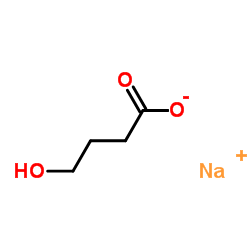Sodium oxybate intolerance associated with familial serum acylcarnitine elevation.
Jon Berner
Index: J. Clin. Sleep Med. 9(1) , 71-2, (2013)
Full Text: HTML
Abstract
Our case describes clinical features of two families defined by joint phenotypes: sodium oxybate intolerance and elevated serum acylcarnitines. Oxybate intolerance variably presents as either cervical dystonia or sleep-related eating disorder. Our objective is to identify biological markers which predict a poor response to sodium oxybate as a treatment for disturbed sleep. Familial inheritance pattern, genotype analysis, multiorgan system involvement, and response to treatment suggest the presence of a secondary cause of fatty oxidation defect, i.e., mitochondrial disorder. Our case report supports the possible conclusion that variance in human mitochondrial metabolism may affect sodium oxybate tolerability.
Related Compounds
| Structure | Name/CAS No. | Molecular Formula | Articles |
|---|---|---|---|
 |
4-Hydroxybutanoic acid sodium salt
CAS:502-85-2 |
C4H8NaO3+ |
|
An improved design of water-soluble propofol prodrugs charac...
2014-04-01 [Anesth. Analg. 118(4) , 745-54, (2014)] |
|
Treatment of alcohol dependence: recent progress and reducti...
2014-12-01 [Minerva Med. 105(6) , 447-66, (2014)] |
|
Discriminative stimulus effects of the GABAB receptor-positi...
2013-03-01 [J. Pharmacol. Exp. Ther. 344(3) , 553-60, (2013)] |
|
Effects of monocarboxylate transporter inhibition on the ora...
2013-04-01 [J. Pharmacol. Exp. Ther. 345(1) , 102-10, (2013)] |
|
The clinical toxicology of γ-hydroxybutyrate, γ-butyrolacton...
2012-07-01 [Clin. Toxicol. (Phila.) 50(6) , 458-70, (2012)] |